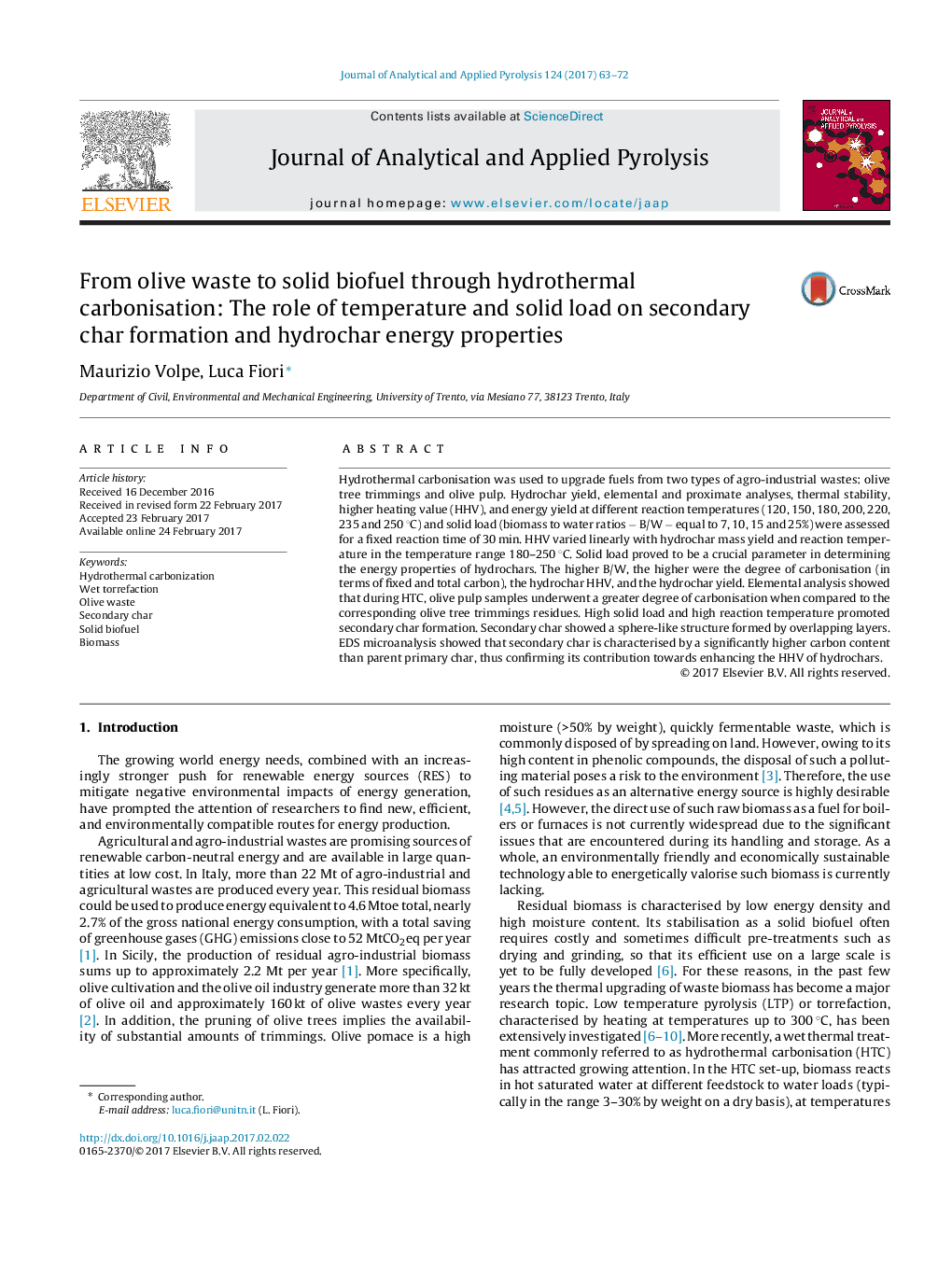| کد مقاله | کد نشریه | سال انتشار | مقاله انگلیسی | نسخه تمام متن |
|---|---|---|---|---|
| 5134571 | 1492953 | 2017 | 10 صفحه PDF | دانلود رایگان |

- Tests at 7 T (range: 120-250 °C) and 4 biomass to water ratios (B/W range 7-25%).
- Solid load (B/W) and T: crucial parameters for the energy properties of hydrochars.
- The higher B/W, the higher the hydrochar carbon content, fixed carbon, HHV, yield.
- High solid load and high reaction temperature promote secondary char formation.
- C/O atomic ratio in secondary char is much higher than in primary char.
Hydrothermal carbonisation was used to upgrade fuels from two types of agro-industrial wastes: olive tree trimmings and olive pulp. Hydrochar yield, elemental and proximate analyses, thermal stability, higher heating value (HHV), and energy yield at different reaction temperatures (120, 150, 180, 200, 220, 235 and 250 °C) and solid load (biomass to water ratios â B/W â equal to 7, 10, 15 and 25%) were assessed for a fixed reaction time of 30 min. HHV varied linearly with hydrochar mass yield and reaction temperature in the temperature range 180-250 °C. Solid load proved to be a crucial parameter in determining the energy properties of hydrochars. The higher B/W, the higher were the degree of carbonisation (in terms of fixed and total carbon), the hydrochar HHV, and the hydrochar yield. Elemental analysis showed that during HTC, olive pulp samples underwent a greater degree of carbonisation when compared to the corresponding olive tree trimmings residues. High solid load and high reaction temperature promoted secondary char formation. Secondary char showed a sphere-like structure formed by overlapping layers. EDS microanalysis showed that secondary char is characterised by a significantly higher carbon content than parent primary char, thus confirming its contribution towards enhancing the HHV of hydrochars.
223
Journal: Journal of Analytical and Applied Pyrolysis - Volume 124, March 2017, Pages 63-72